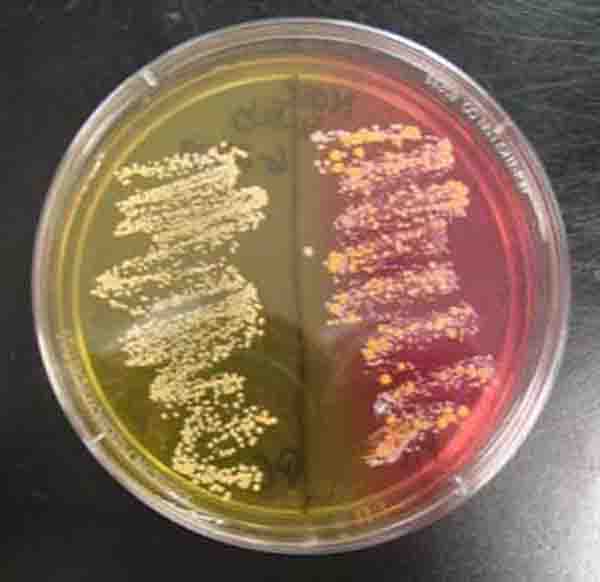Chemistry of Microbiology Test Questions II
The following questions, from the Virtual Microbiology Classroom (8-week & 16-week), are designed to help students better understand Organic Chemistry. All questions are based on material that can be found on the Chemistry of Microbiology Lecture Main Page.
SPO VIRTUAL CLASSROOMS
Chemistry of Microbiology
Practice Test Questions II (Organic)
Virtual Microbiology Classroom of Science Prof Online
 | ||||||
1. Lactose is a...
a. polysaccharide
b. dipeptide
c. monosaccharide
d. fatty acid
e. disaccharide
2. Peptide bonds link amino acids together to form polypeptides.
a. True b. False
3. The pairing of nitrogenous bases make up the "rungs" of the DNA "ladder". Which base in a DNA molecule can form hydrogen bonds with thymine?
a. thymine b. uracil c. guanine d. adenine e. cytosine
4. The "energy currency" used within cells is called:
a. Euro
b. adenosine triphosphate (ATP)
c. adenosine monophosphate (AMP)
d. ribose
e. deoxyribonucleic acid (DNA)
5. Which two answers best describe what would be found in a triglyceride?
#1. glycerol
#2. one fatty acid
#3. two fatty acids
#4. three fatty acids
#5. nucleoside
#6. amino acid
a. 4, 5 b. 1, 2 c. 1, 4 d. 4, 6 e. 1, 5
6. How many atoms of hydrogen (H) are able to bond with one carbon (C) atom?
a. one b. two c. three d. four e. five
7. Which of the following are biologically important polymers (large molecules composed of subunits or monomers)?
#1. polysaccharide
#2. monosaccharide
#3. amino acids
#4. proteins
#5. nucleotides
#6. DNA
a. 3, 6 b. 1, 4, 6 c. 2, 3, 4 d. 1, 2, 3, 4, 5, 6 e. 4, 6
8. The type of lipid molecules that are polar and spontaneously arrange in a lipid bilayer are:
a. proteins b. fats c. waxes d. phospholipids
a. a specific type of protein b. fat c. pH
d. a specific type of carbohydrate d. nucleic acid
a. can ferment lactose
b. are halophiles
c. can ferment mannitol
d. are Gram+
e. are Gram-
Click here for more Chemistry of Microbiology practice test questions.
Chemistry of Micro
Free review questions to help students practice their understanding of
You have free access to a large collection of materials used in a college-level introductory microbiology course. The Virtual Microbiology Classroom provides a wide range of free educational resources including PowerPoint Lectures, Study Guides, Review Questions and Practice Test Questions.
Mannitol Salt Medium changes color from pink to yellow when manntol fermeters, such as Staph aureus are present.
Page last updated 2/2016




